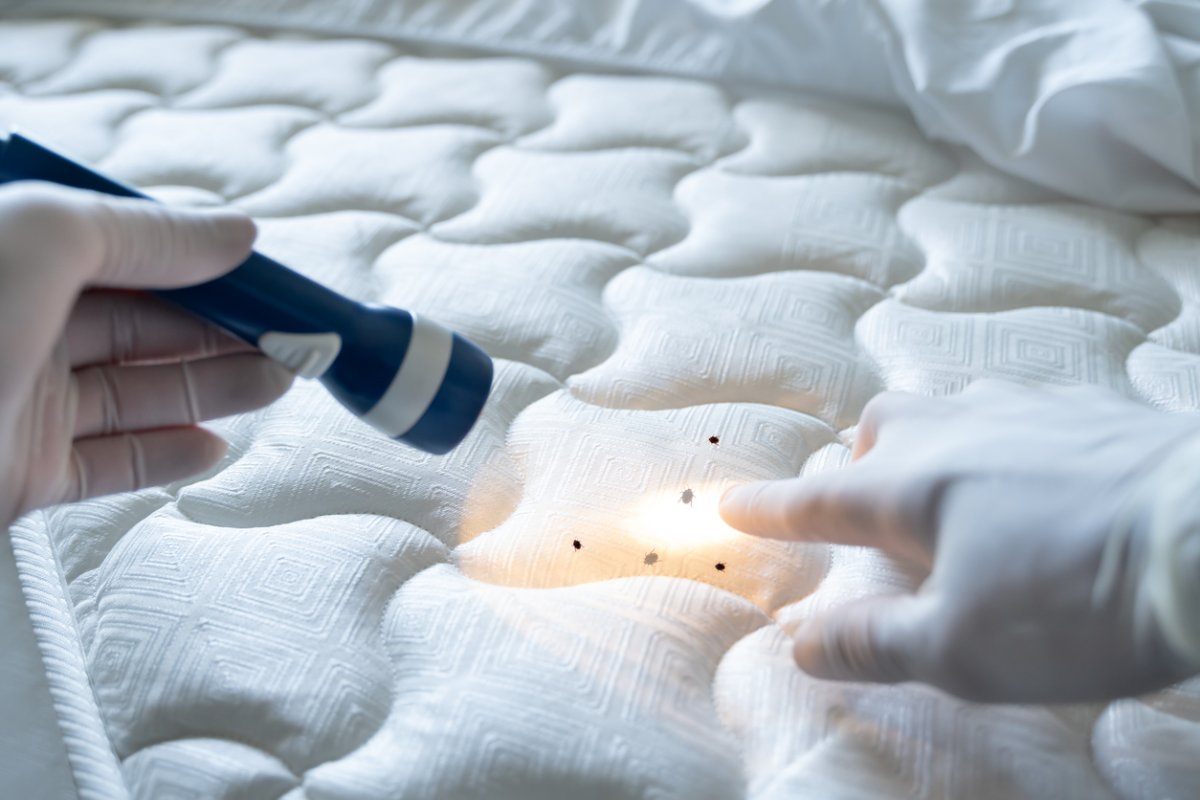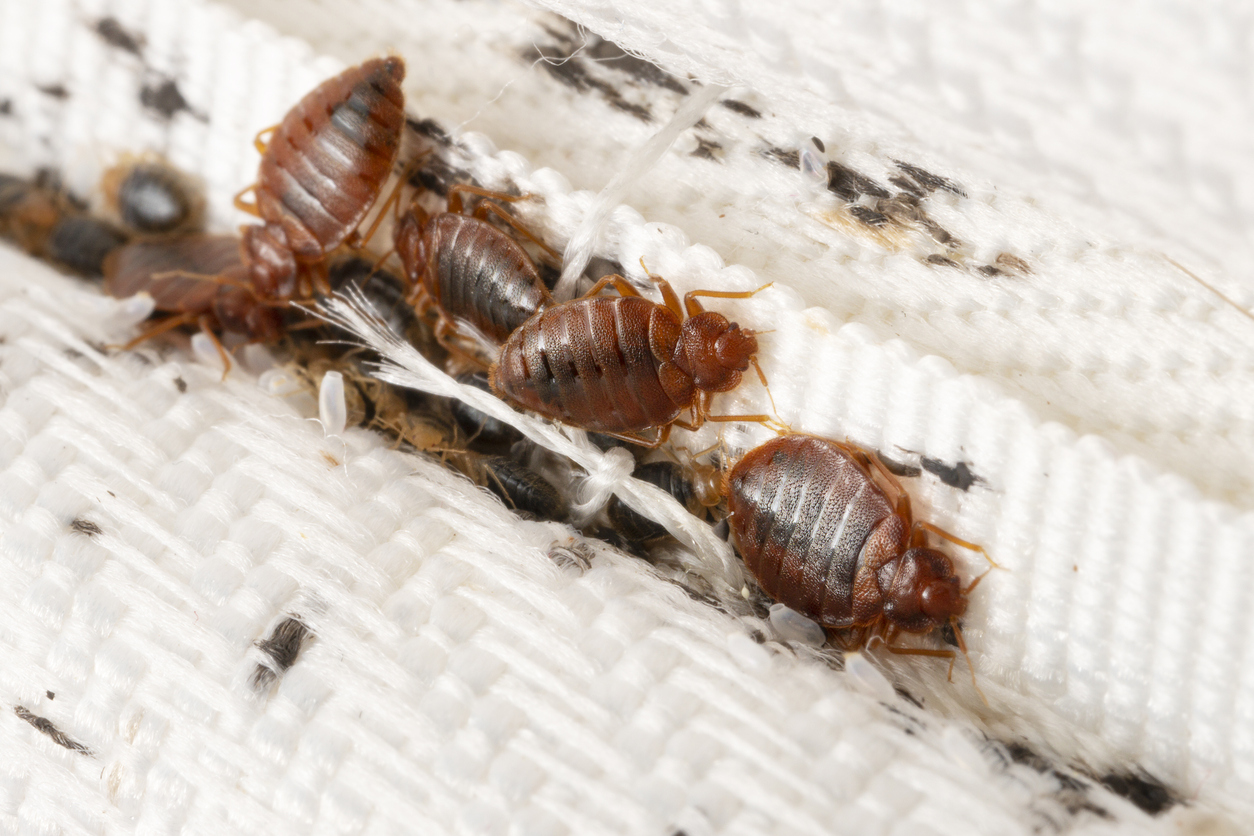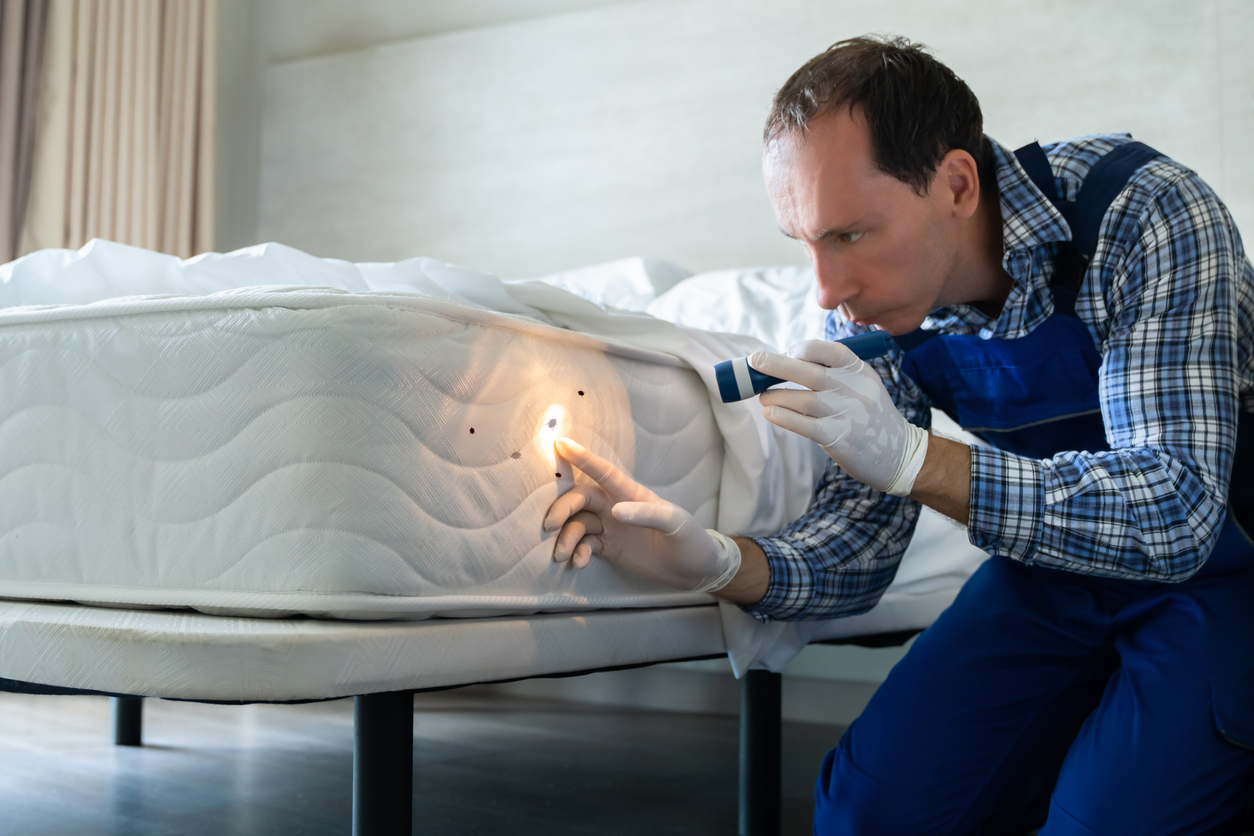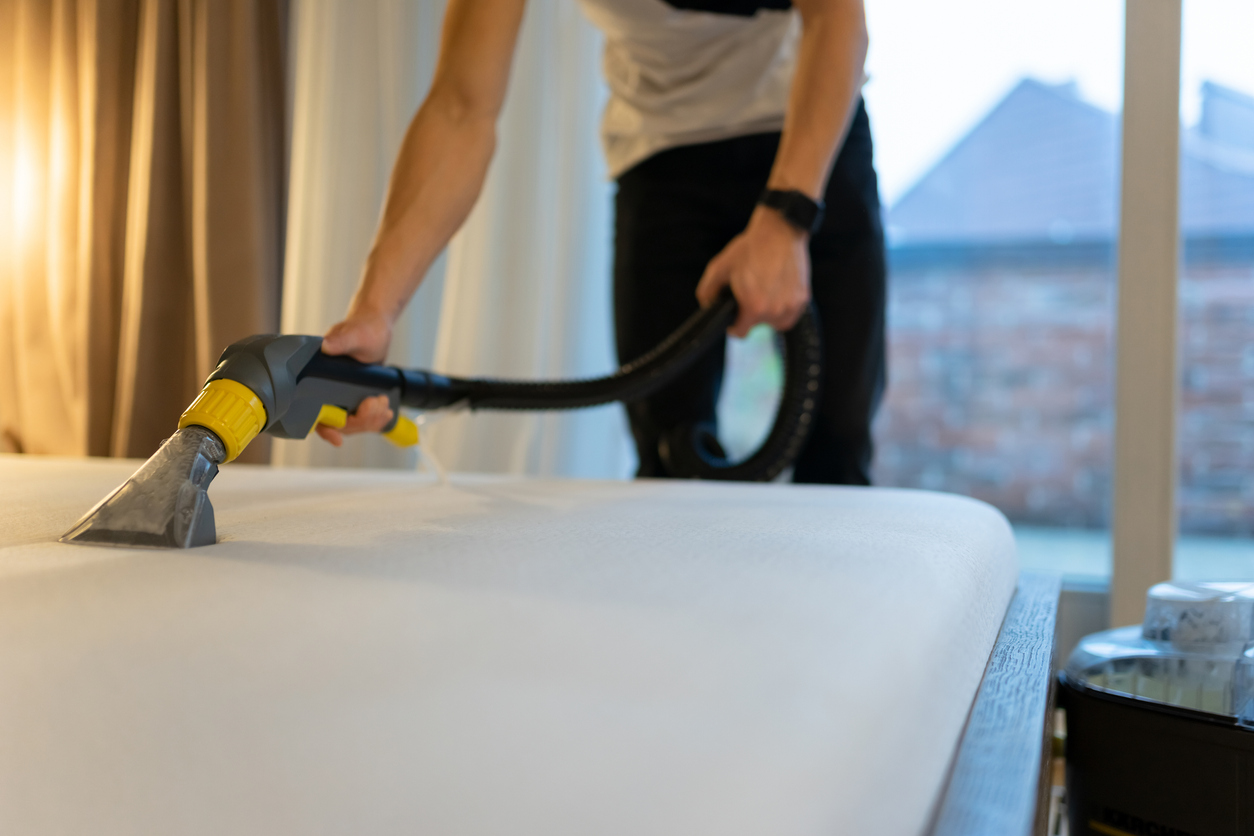

We may earn revenue from the products available on this page and participate in affiliate programs. Learn More ›
On the list of household pests that homeowners dread the most, bed bugs rank fairly high. The reason? Bed bugs infiltrate the one place that should be a comforting refuge at the end of the day. But what are bed bugs, and how do bed bugs spread? How easy is it to get bed bugs? These tiny, bloodsucking insects like to burrow in mattresses and other upholstered furniture in order to stay close to their food sources. They are most active at night, which is why it is common for homeowners who have bed bugs to wake up with itchy welts that seem to come from nowhere. Bed bugs are often associated with dirty houses or cheap hotels, but the truth is that even very clean homes are susceptible. If there are bed bugs on a person’s clothes or belongings when they enter a home, the bugs are liable to stick around and continue to reproduce for as long as they have access to blood from the home’s residents or pets.
As the title suggests, it is most common to encounter bed bugs in mattresses. Luckily, there are plenty of effective methods for how to get rid of bed bugs in a mattress that don’t require purchasing a whole new bed. Understanding what attracts bed bugs and how they behave can make it easier to eliminate the pests and avoid future bed bug transmission.
Time required: 1 to 2 hours
Difficulty: Beginner
Estimated cost: $20 to $100
Tools & Materials
Bobvila.com may earn a commission from purchases made through these links.
Before You Begin…
Bed bugs are unpleasant, but fortunately they do not pose a significant health risk. Unlike ticks or fleas, they don’t live on their hosts. So if you’re wondering, “Do bed bugs travel on people?” they may stick to clothes, but not to the skin. The important thing to keep in mind is that bed bugs reproduce very quickly, and they can live for as long as a year. They can even survive for several months between meals. The sooner steps are taken to eliminate the problem, the fewer bugs and unhatched eggs there will be to deal with.

Tips for How to Get Rid of Bed Bugs in a Mattress
- Identify all possible sites of infestation for treatment.
- Keep the home clean and free of clutter to give the bed bugs fewer hiding places.
- Put any clothes that may contain bed bugs in a plastic bag in the freezer for a few days or wash them in hot water.
Safety Considerations
- When using chemical pesticides, be sure to read the product label and take note of any potential harmful effects to people or pets.
- If you’re using a steamer, operate it according to the manufacturer’s instructions to avoid burns.
STEP 1: Identify any infested spaces.
Once you suspect that there are bed bugs in a mattress, you can start by removing any sheets from the bed to give it a thorough check. Here’s how to tell if you have bed bugs: Look for clusters of tiny, flat brownish-red bugs that are only about 5 millimeters in size. There may also be visible eggs, droppings, shed skins, or tiny blood spots from where the bugs have been crushed. There are plenty of other bugs that look like bed bugs, but if the insects are concentrated on the mattress and you have been experiencing bites, bed bugs are more than likely to be the culprit.
As you search, pay attention to cracks and crevices. Bed bugs are especially fond of burrowing in seams, fabric folds, and corners of furniture. If the infestation is severe, there may also be a musty smell in the affected area, as bed bugs will emit pheromones when they are threatened. While bed bugs are best known for infesting mattresses and bed frames, they’ll nestle in anywhere that provides them with shelter and easy access to people and pets to feast on. Be sure to check the surrounding floor and any nearby furniture in addition to the mattress.

STEP 2: Vacuum any visible bed bugs to contain the infestation.
The most efficient way to clean a mattress from bed bugs is to vacuum them up. First, wash all of the sheets and blankets in hot water, then go over the mattress with a handheld vacuum, making sure not to miss any seams or corners. Then sweep or vacuum the floor to catch any bugs that were knocked off the bed or burrowed in the carpet. Don’t forget to go over hard surfaces, too. Bed bugs are known to hide out in gaps in bed frames and around baseboards. Once you have finished vacuuming, empty the vacuum, seal up the trash bag, and take it outside.
STEP 3: Prepare the area for treatment.
Once everything has been vacuumed, the next step is preparing the affected areas for treatment. If there are any piles of clothes or linens on the floor surrounding the mattress, throw them into the washing machine, ideally washing them with hot water. If any of the clothes cannot be washed in hot water, stick them in the freezer in a plastic bag for a few days to kill off the bugs. Pick up any clutter or trash from the floor as well. The key is to minimize the number of places for the bugs to take shelter when the treatment is applied. This can also include scoping the room for cracks in walls and flooring and sealing them with caulk. You’ll want to be careful not to inadvertently transfer the bugs to another room as you’re moving items and putting things away.
STEP 4: Kill the bed bugs with chemical or nonchemical treatments—or by hiring a professional bed bug exterminator.
What kills bed bugs on a mattress? One of the simplest ways to kill the pests is to use temperature as a tool. Bed bugs cannot survive in extreme heat or cold. Any bedding that cannot be washed in hot water can be put in the freezer for 3 or 4 days, which effectively freezes the bugs to death. The mattress itself can be treated with a steamer, although the steam must reach a temperature of 120 degrees Fahrenheit to be effective.
Another option is to use one of the best bed bug mattress covers, which fits over the mattress and seals the bugs inside. Bed bugs on the outside will not be able to penetrate the cover, and any bugs inside the mattress will starve. In some cases, it may make more sense to try a chemical mattress treatment for bed bugs. Insecticides such as pyrethrins or pyrethroids are popular since they are effective but generally not harmful to people or animals. Another option is to try sprinkling a desiccant like diatomaceous earth onto the bed and vacuuming it up. Desiccants work by permeating the bugs’ protective outer shell and also tend to be nontoxic.
If the bed bug problem is severe, it may be best to hire one of the best bed bug exterminators like Orkin, Terminix, and Ehrlich Pest Control. Every home is different, so there is not always a one-size-fits-all solution for pest control. Exterminators are experienced with stubborn bed bug infestations and can identify the best course of action in an individual home.

STEP 5: Prevent any future bed bug infestations.
Bed bugs are hardy insects, and it can take a few months to get rid of them for good. When it comes to how to prevent bed bugs from reinfesting the home, you’ll want to check the mattress every few days and reapply treatment if necessary. You can continue to vacuum regularly and wash sheets and clothing often in hot water. Some people prefer to simply toss their infested mattress and start over with a brand-new one. If you go this route, just be sure to give the bed frame and surrounding area a good clean to avoid getting bed bugs on the new mattress. Using a mattress protector can also be just as effective for prevention as it is for treating an existing bed bug problem. If you’re wondering, “How long can bed bugs live in a mattress?” the answer is up to a year, so it’s wise to keep the mattress cover in place for at least that long.
As far as bringing new bed bugs into the home, you can protect yourself by laundering clothes immediately after returning from a vacation. Also, you’ll want to inspect secondhand clothing or furniture thoroughly before bringing it inside.

Bed bugs can be stubborn, but taking the above measures should control the problem in time. Vacuuming away visible bugs and eggs and treating them with chemical or non-chemical bed bug mattress cleaner is a tried-and-true method. If you’re not keen on taking on this project yourself, consider hiring an exterminator, who will have the tools and knowledge necessary to eliminate bed bugs for good.
